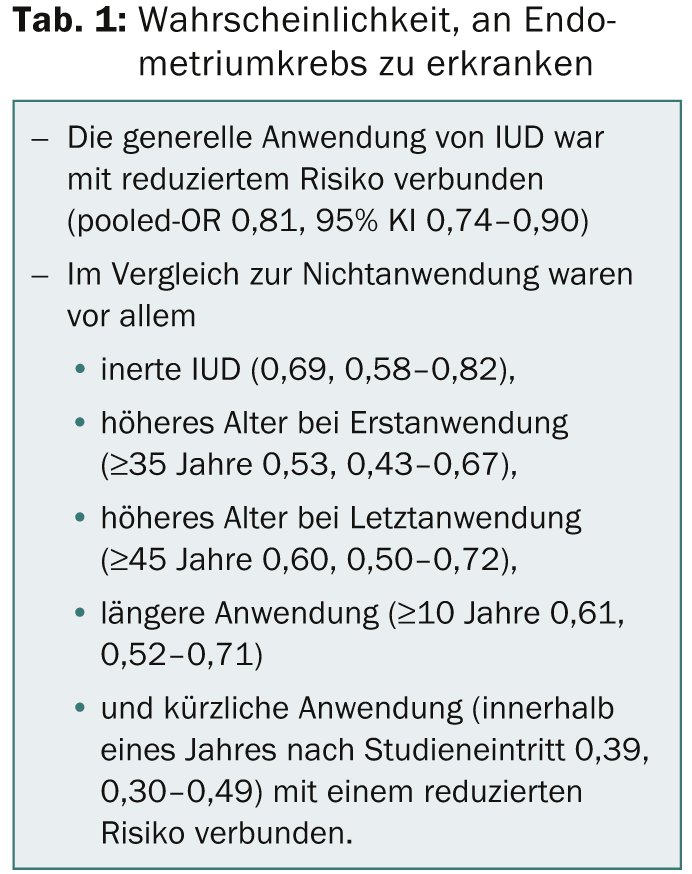Recently, evidence has accumulated in the literature that intrauterine devices may reduce the risk of developing endometrial cancer. What is the current study situation on this? This question was explored in a pooled analysis. It is the largest study to date testing this relationship in the area of intrauterine devices (“IUDs”).
(ag) What is certain is that intrauterine devices (“IUDs”) cause a variety of changes in the uterus. These include immunological and biochemical processes that could influence the risk of endometrial cancer.
Pooled analysis with clear result
A new study published in the International Journal of Cancer has now investigated precisely this question. Using a pooled analysis consisting of four cohort and 14 case-control studies, a total of 8801 patients with endometrial cancer and 15,357 controls were studied. With this, the researchers calculated the likelihood of developing endometrial cancer as a function of IUD use. Specifically, a distinction was made according to the type, start, end, and duration of contraception using an IUD. Important factors were included in the analysis, such as age, ethnicity, BMI, diabetes, menopause, and smoking. It was found that general IUD use was associated with a reduced risk of endometrial cancer, as shown in Table 1 (odds ratios with associated confidence intervals).

What’s behind it?
Apparently, IUD use reduces the likelihood of endometrial cancer by almost 20%. Nevertheless, according to the authors, future studies still need to clarify the details: Is there a bias in detection and what is the role of biological processes in the endometrium that occur in response to the foreign body in the uterus? Might increased bleeding (and increased flushing of carcinogenic cells) or local hormonal changes affect the results? Much remains to be done.
Source: Felix AS, et al: Intrauterine devices and endometrial cancer risk: A pooled analysis of the Epidemiology of Endometrial Cancer Consortium. Int J Cancer 2014. doi: 10.1002/ijc.29229.











